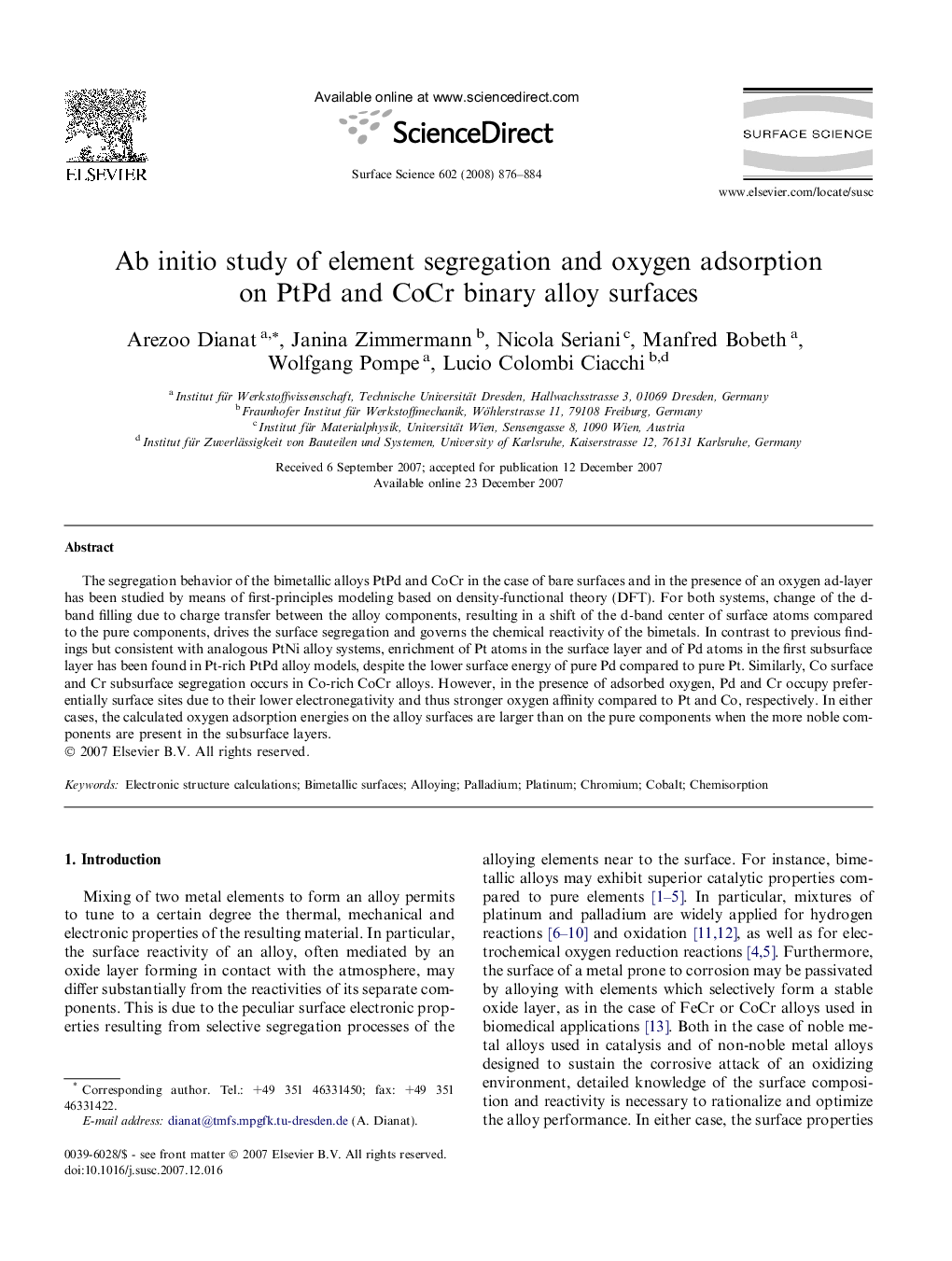| Article ID | Journal | Published Year | Pages | File Type |
|---|---|---|---|---|
| 5425286 | Surface Science | 2008 | 9 Pages |
Abstract
The segregation behavior of the bimetallic alloys PtPd and CoCr in the case of bare surfaces and in the presence of an oxygen ad-layer has been studied by means of first-principles modeling based on density-functional theory (DFT). For both systems, change of the d-band filling due to charge transfer between the alloy components, resulting in a shift of the d-band center of surface atoms compared to the pure components, drives the surface segregation and governs the chemical reactivity of the bimetals. In contrast to previous findings but consistent with analogous PtNi alloy systems, enrichment of Pt atoms in the surface layer and of Pd atoms in the first subsurface layer has been found in Pt-rich PtPd alloy models, despite the lower surface energy of pure Pd compared to pure Pt. Similarly, Co surface and Cr subsurface segregation occurs in Co-rich CoCr alloys. However, in the presence of adsorbed oxygen, Pd and Cr occupy preferentially surface sites due to their lower electronegativity and thus stronger oxygen affinity compared to Pt and Co, respectively. In either cases, the calculated oxygen adsorption energies on the alloy surfaces are larger than on the pure components when the more noble components are present in the subsurface layers.
Keywords
Related Topics
Physical Sciences and Engineering
Chemistry
Physical and Theoretical Chemistry
Authors
Arezoo Dianat, Janina Zimmermann, Nicola Seriani, Manfred Bobeth, Wolfgang Pompe, Lucio Colombi Ciacchi,
